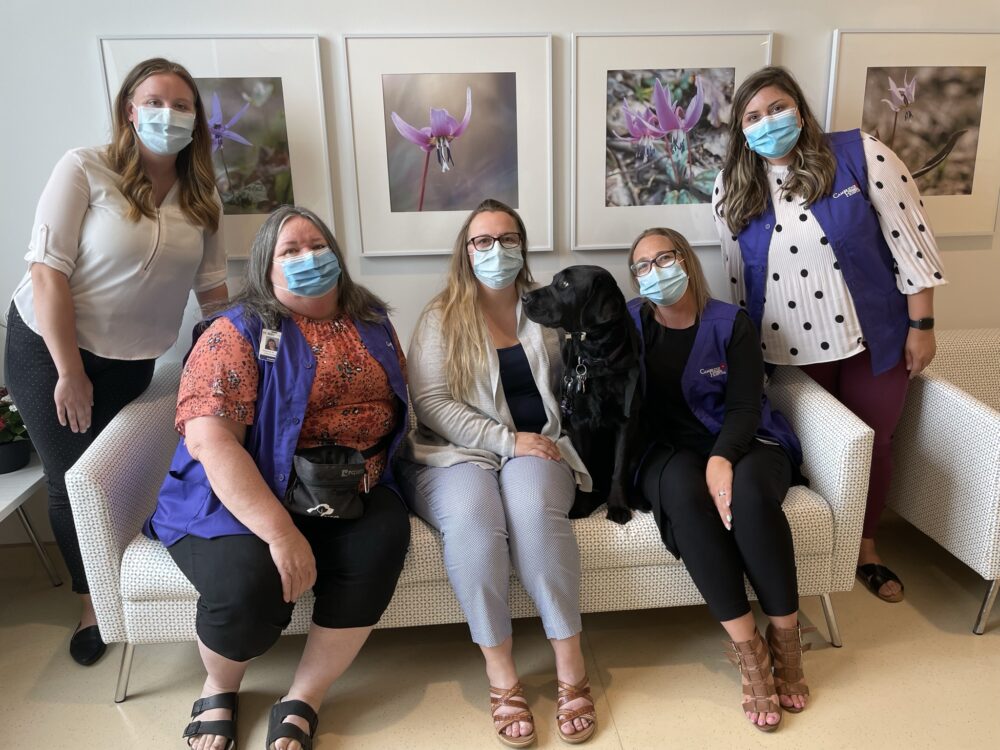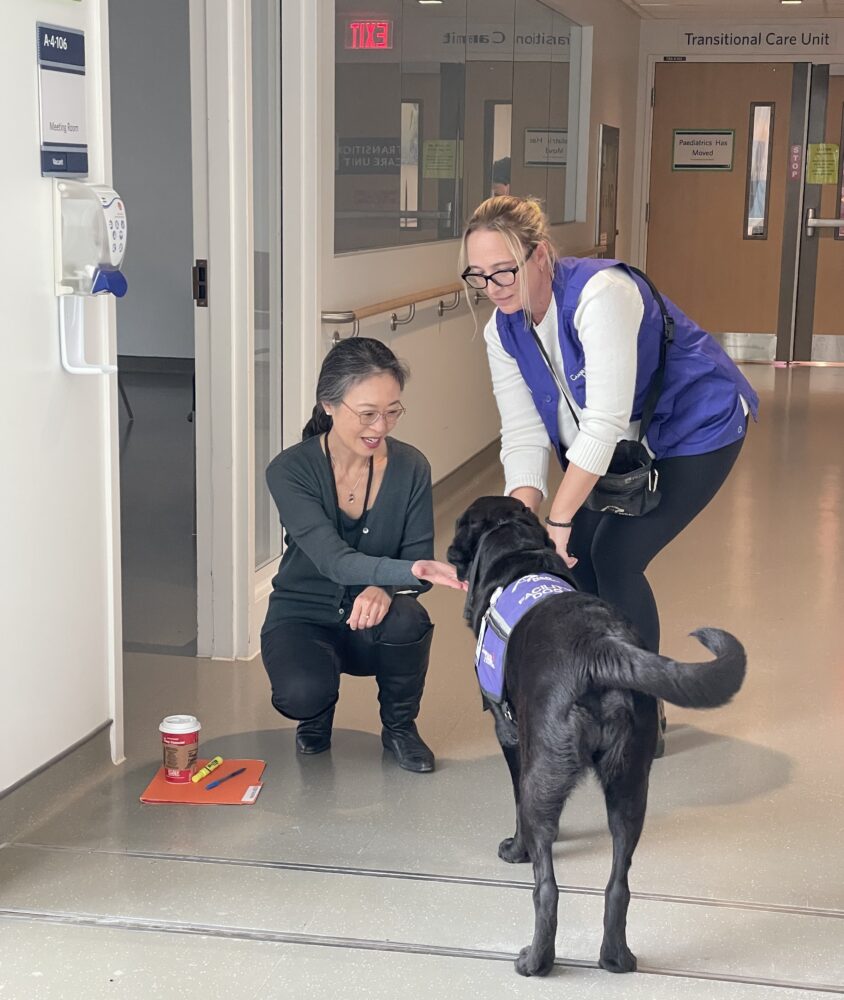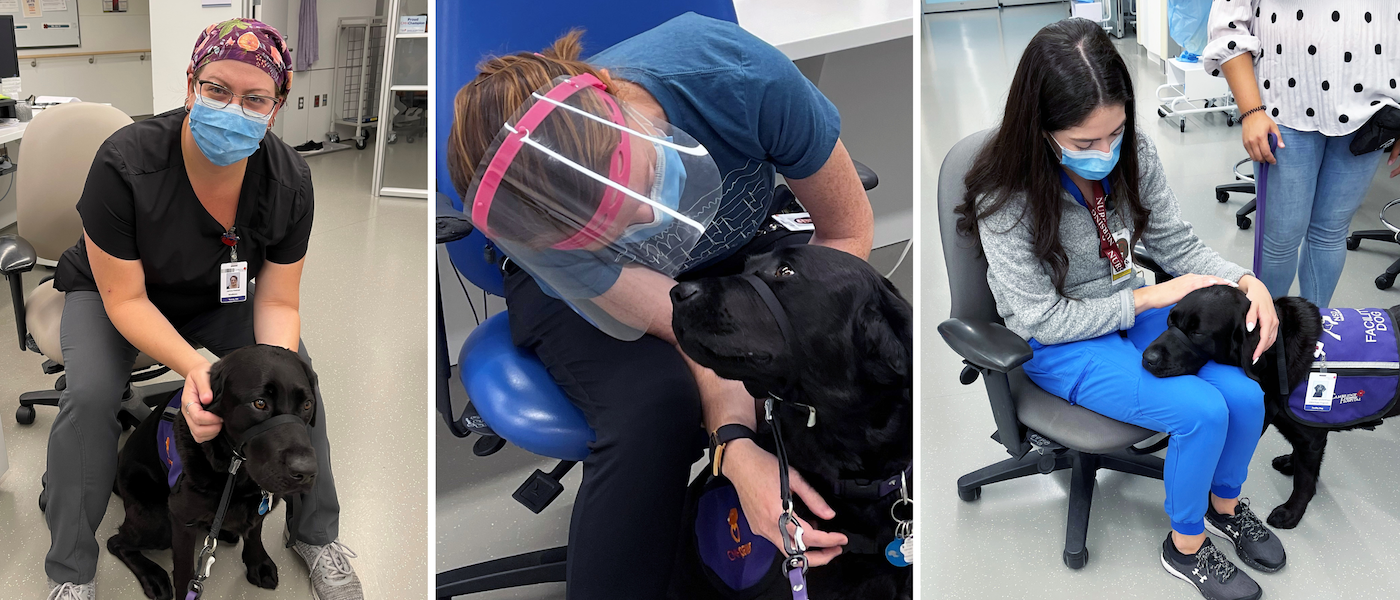In recent years, as health and wellness programs have become part of work life, companies have turned to animals to provide rest and reprieve from the demands of the job. Now, a new research project from the University of Guelph is looking at what kind of impact those furry friends can have on health care professionals.
At Cambridge Memorial Hospital (CMH), facility dog Ember is a black Labrador retriever who works eight-hour shifts alongside staff, physicians, midwives and volunteers, offering stress relief, mental health support and emotional comfort in a high-stress environment.

The research, led by Dr. Basem Gohar, builds on previous studies that assessed the mental health of various health care providers. Gohar is a clinical psychologist and professor in the Department of Population Medicine at the Ontario Veterinary College where he leads U of G’s Research in Occupational Health and Wellness Lab.
“This is a first for me,” Gohar says of research focused on human and animal interaction. “I’m excited to see what we can learn from Ember.”
Interacting with animals has been shown to reduce stress and loneliness, boost moods and increase feelings of social support. The structure of the program with Ember is an example of organizational support, Gohar points out. Research has shown that organizational efforts are more effective than individual-directed initiatives in supporting employee well-being, particularly for burnout.
“This is an example of what an organization can do to support staff on an organizational level,” Gohar says. “While Ember is the star of the show, the underlying factor that we want to address is how we can support and retain staff. That’s the goal.”
With research interests in public health, specifically occupational health and workplace mental health, Gohar’s new project is designed to touch on each.
In partnership with CMH and with funding support from a Partnership Engage grant from the Social Sciences and Humanities Research Council, Gohar’s team is taking an in-depth and open-ended approach through one-on-one interviews with staff. Joining Gohar in this investigation are Drs. Jason Coe and Katie Clow, both veterinarians with expertise in human-animal bond.
Mental health impacted by stressful, traumatic work environments in health care
CMH is the first Canadian hospital to have an animal certified by National Service Dogs (NSD) in a health care setting, something police, fire departments and other first responders have done previously. Ember was trained by NSD and uses four cues that range from minimal contact and quick pets to jumping over someone’s lap, an exercise that can provide the same benefits as a weighted blanket, calming a person by relaxing their nervous system.
Much like a doctor or a nurse, Ember makes the hospital rounds each day, starting in the emergency department and then rotating through assigned areas for 30-minute visits. Certain areas can accommodate Ember when off leash, allowing for greater interactions with staff.


Ember is not a therapy dog, so her interactions with patients are little to none. At the entrance to the hospital, visitors are greeted with a notice displaying Ember’s photo, name and role at CMH, so they are aware of her presence.
When she’s not on shift at CMH, Ember lives with her primary handler – there are four in total – who provides food, lodging and veterinary care, supported by the Lyle S. Hallman Foundation.
CMH is an active teaching facility, so a program of this nature fits the culture well, says CEO Patrick Gaskin.
“We know this provides great value to our staff and that there are significant benefits in it,” he says. “Hospitals are incredibly stressful environments. When you work on the front line in an emergency room, it can be traumatic. You’re asking staff to face that and then an hour later, to go see another patient.”
Jenna Bilenduke, Wellness and Well-Being Specialist at CMH, and one of Ember’s handlers, says that while the research will focus on Ember’s impact on the staff, the team is also listening and observing the dog’s interactions, ensuring her well-being too.
Ember has been at work at CMH since May 2022 and the feedback from staff has already been very positive, Bilenduke says. Some staff with a fear of dogs have graduated to petting Ember’s head because they feel a familiarity with her and recognize she does not pose a threat.
“Those are huge success stories in my books,” Bilenduke says.
“I’ve had multiple staff members mention that Ember has helped through a tough time, which just highlights how you never know what people are going through,” she points out. “Even something as small as petting a dog can be the reason that someone was able to make it through the day. That’s why she’s here.”
Contact:
Dr. Basem Gohar
bgohar@uoguelph.ca
